Critical strategy choices await the IMOCA skippers as the early chess game plays itself out in the Route du Rhum
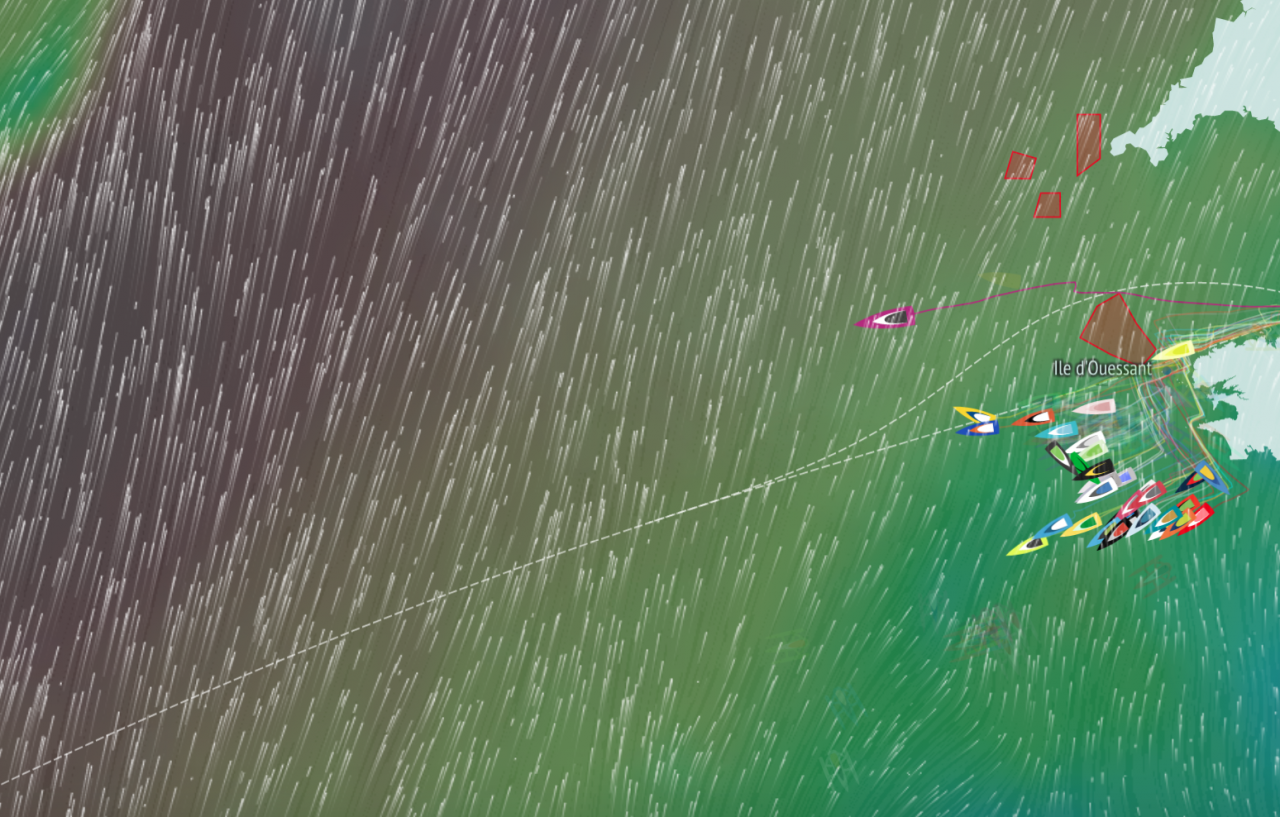
After their first night at sea, the remaining 36 skippers in the IMOCA fleet of the Route du Rhum-Destination Guadeloupe are heading out into the north Atlantic with a complex weather pattern ahead of them and some tricky decisions to make.
The early stages saw the skippers beating along the Brittany coast into a fresh west-southwesterly air stream with all but one of them – Louis Duc on Fives-Lantana Environment – electing to go inside the Traffic Separation Zone off Ushant. After 20 hours at sea Duc was the leader in the ranking by virtue of being furthest west, but the real action was happening about 110 miles southeast of him.
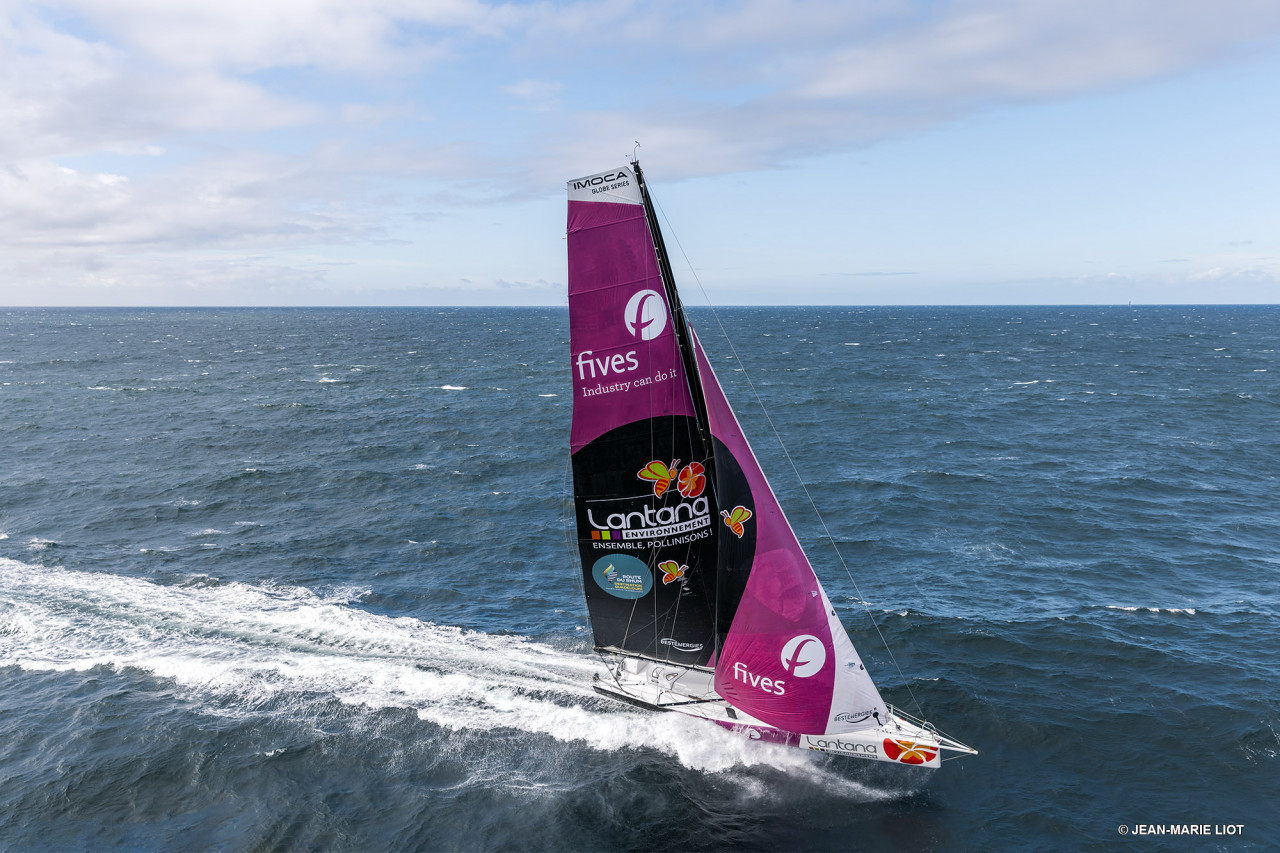 © © Jean-Marie LIOT
© © Jean-Marie LIOT
That is where the group of fastest boats were clustered led by Charlie Dalin on APIVIA, ahead of Thomas Ruyant on LinkedOut and the Louis Burton on Bureau Vallée. Also in that group were Jérémie Beyou on Charal, Kevin Escoffier on Holcim-PRB, Maxime Sorel on V And B-Monbana-Mayenne and Justine Mettraux on Teamwork.
About 55 miles northwest of them a second much smaller group of boats were taking a more northerly option, though not as extreme as the one chosen by Duc. This echelon was led by the Kiwi skipper Conrad Colman on Imagine, making the most of his excellent start to the race, followed by Benjamin Dutreux on Guyot Environnement-Water Family, Arnaud Boissieres on La Mie Câline and Guirec Soudée on Freelance.com.
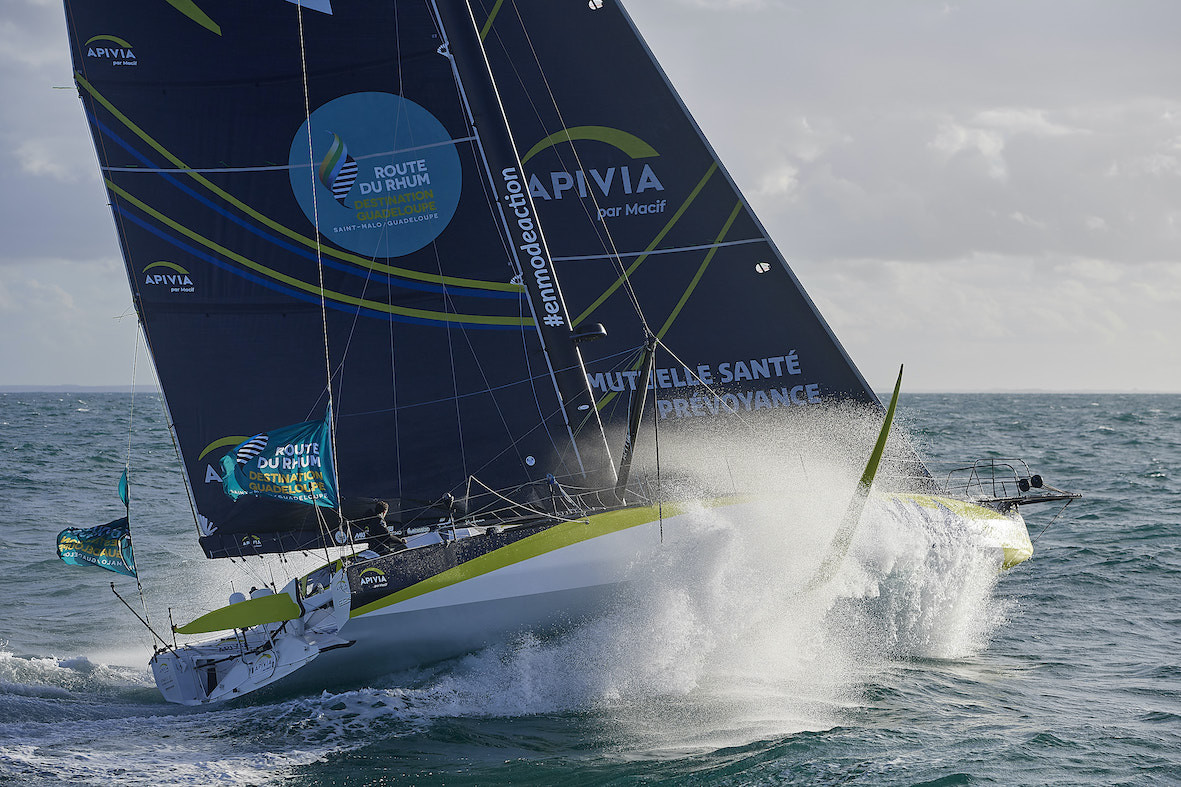 © PILPRE ARNAUD
© PILPRE ARNAUD
Overall it is already becoming clear that Dalin – who has won every race in the IMOCA division this season and for whom this is his last outing in his current Apivia – has taken the initiative early in this contest, as he so often does, and he will now look to control matters from the front over the next few critical days.
The game now is all about where and when Dalin and his rivals cross the first frontal system in their pathway to the west and the south – a powerful weather system that stretches from the Azores all the way to the northwest coast of Scotland. How this transition goes could well affect the relative positions of the leading boats and whether Dalin can protect his early advantage.
”The main thing is crossing the first front,”confirmed Pierre Le Roy, the winner of the 2021 Mini Transat who is part Dalin’s team and worked with the APIVIA skipper on is meteo preparation for this race. “The main idea is that they will have to choose how far north or south they cross the front because the game is to be able to reach the trade winds as soon as possible. It is not possible to avoid this front, so it is just a matter of timing.”
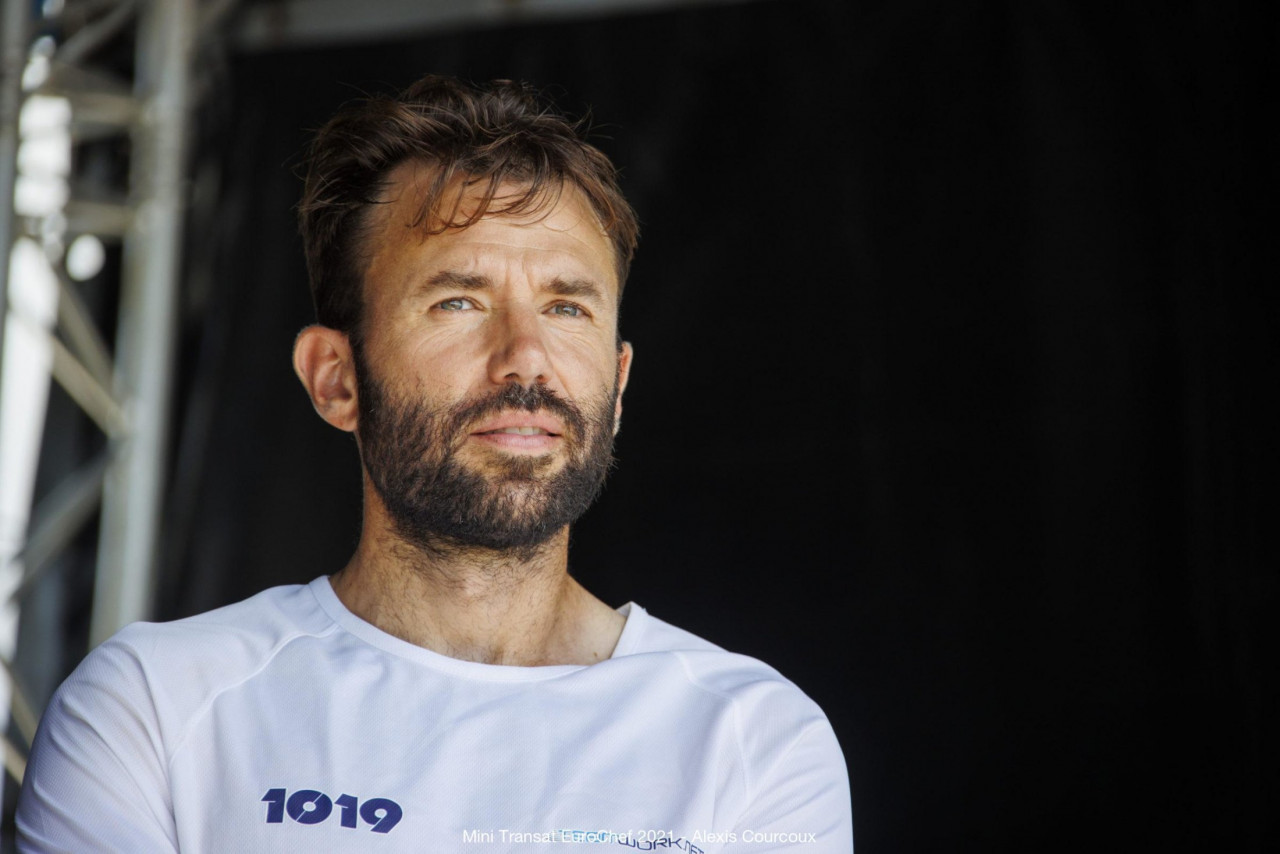
The positioning of the boats will determine how strong wind conditions are at the front and the sea state, with the magnitude of both increasing for those skippers positioned further north. “To the north they are going to get some stronger winds and bigger waves as well,” continued le Roy. “But a lot will depend on the timing and the speed of the boats because they will not be able to go as far south or north as they wish, depending on whether they are foiling or in daggerboard configuration.”
Le Roy says the overall weather picture – with a second front coming in a couple of days and uncertain conditions between the two systems – meant that the Apivia team was not able to define a clear pre-start strategy for Dalin, but focused instead on defining and setting out the various options.
And so far, Le Roy believes, the APIVIA skipper – bidding to win the Route du Rhum at the first time of asking – has made the right choices, as evidenced by the fact that almost all of the fastest boats in the IMOCA fleet are following him.
“There was a lot of uncertainly about the weather forecast in the build-up to the start,” explained Le Roy. “Our main work was to define and to work on all the different scenarios and the strategy was to keep our options open and then make sure that Charlie had time at some point to address the strategy on the road. The important thing was to ensure that he could find one or two hours on the first night, or second night, to make sure that he was able to adjust his trajectory to the first front. It was not possible before the start to tell him ‘OK, go this way or that way…’”
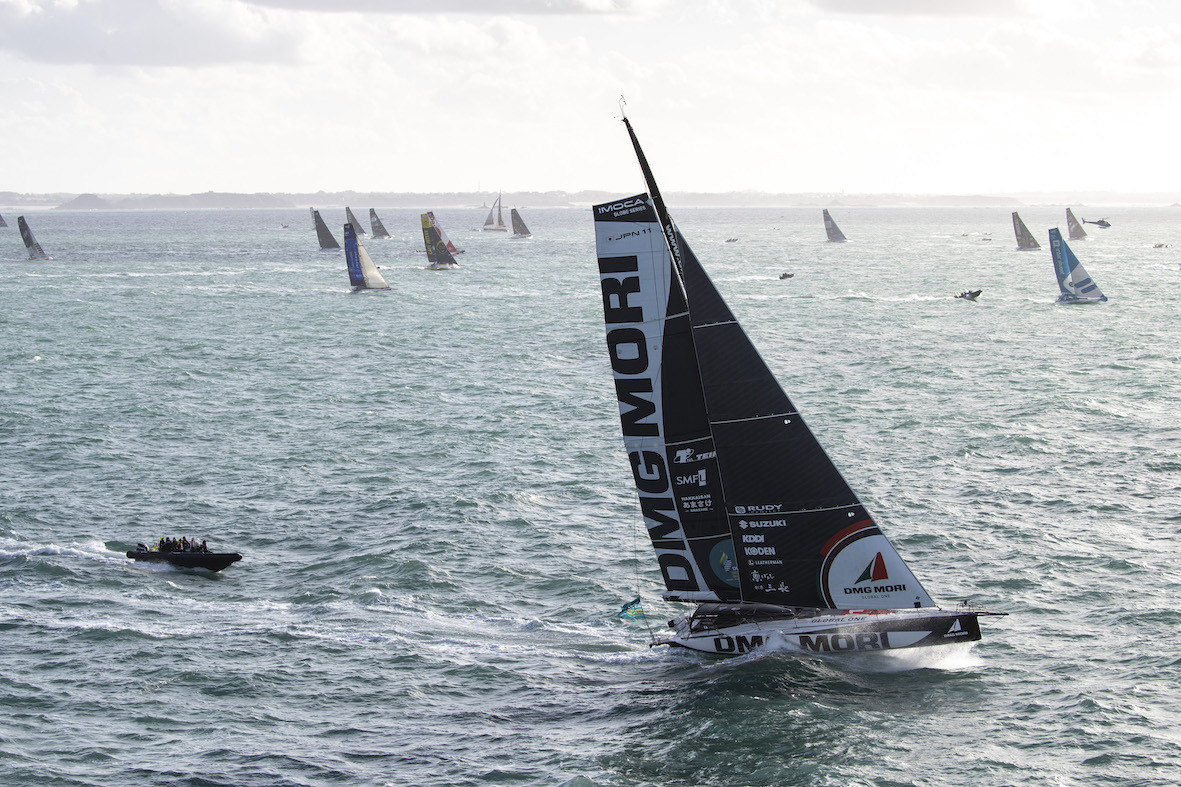 © Vincent Olivaud - RDR 2022
© Vincent Olivaud - RDR 2022
Le Roy says Duc is taking a risk on his own well to the north of everyone else. “Theoretically it could be a very fast route, but the question is are you able to go fast enough to follow the routing and are you able to maintain the boat in good condition?”he said. “It is a very risky route actually, especially going there on your own. But in his situation, he can’t win the race if he just follows the fastest boats, so why not have a go, but I hope he won’t get himself into any trouble.”
Sadly “trouble” has been encountered by Oliver Heer, in his first big race on Oliver Heer Ocean Racing, and Kojiro Shiraishi on DMG Mori Global One who collided as they were approaching the gate off Cape Fréhel. Both skippers returned to St Malo where Shiraishi announced his retirement from the race while Heer’s team are working hard to repair his bowsprit and bow to enable him to re-start the race in the next day or so.
Another skipper who has taken a pit-stop is Rodolphe Sepho on Rêve de Large-Région Guadeloupe who stopped for several hours in Roscoff but has now re-joined the race.
Ed Gorman
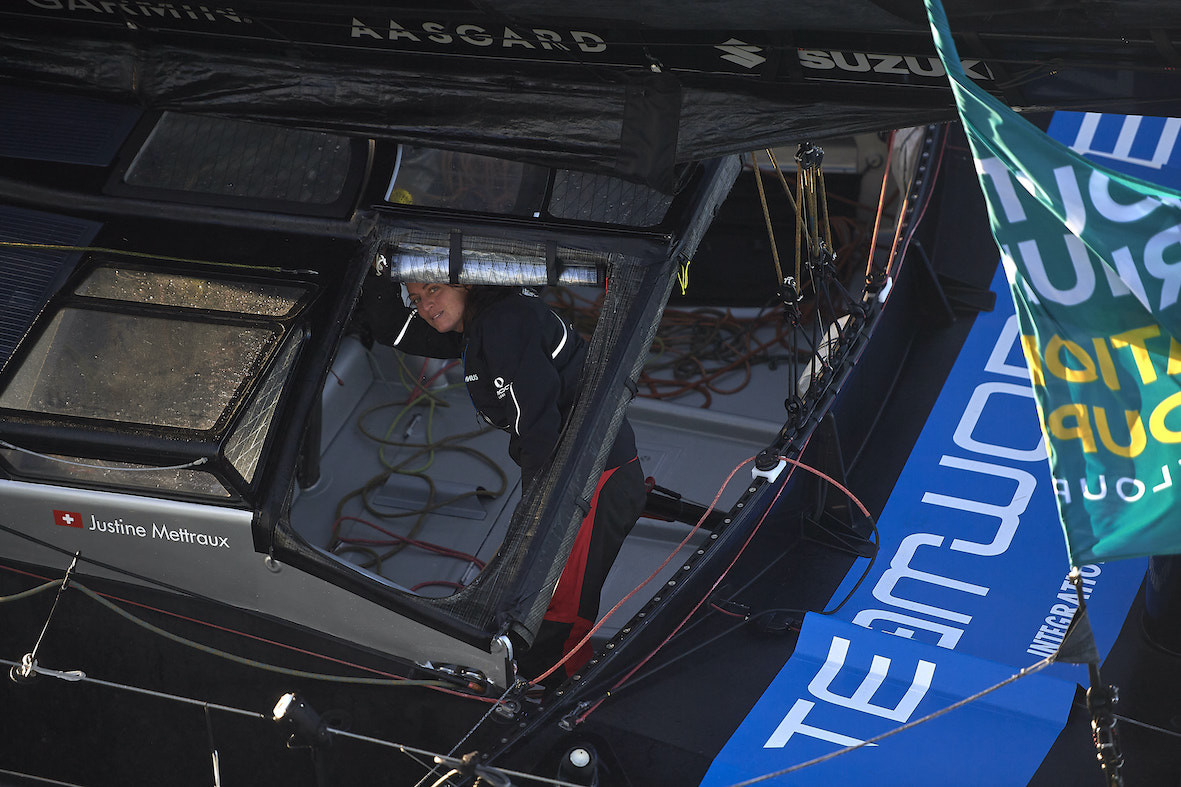 © PILPRE ARNAUD
© PILPRE ARNAUD
Teams info
The Transat CIC: a spectacular start!
Brittany turned on its best Spring sailing weather – sunshine, puffy cumulus clouds and a decent 10-15kts of Westerly wind – to send the 48 strong Transat CIC fleet on its way from Lorient towards New York for the start …
•••Charlie Dalin: Raring to go on his first solo The Transat CIC
It’s good to see Charlie Dalin back where he belongs, at the helm of his almost brand new Guillaume Verdier IMOCA, Macif Santé Prévoyance, ready to take on the north Atlantic in The Transat CIC.
•••